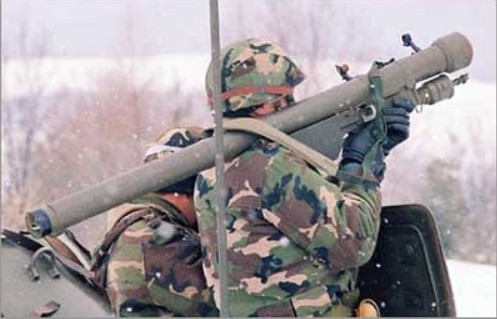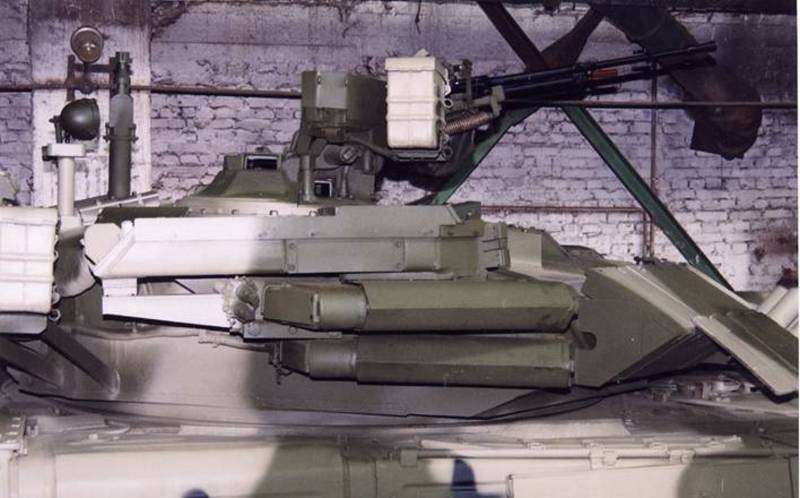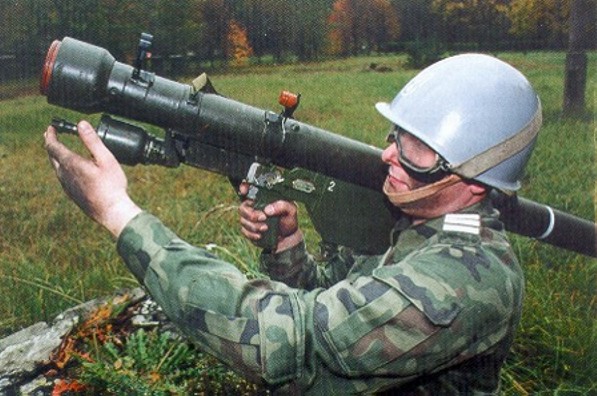
Work on the creation of portable anti-aircraft missile system (MANPADS) “Arrow 2” started in accordance with the Decree of the USSR 25 August 1960 g. on the execution of the complex “Arrow”. By this time, I received limited information about, that even in the US 1958 year began to develop portable SAM with a rocket, equipped passive thermal homing.
PZRK 9K32 “Arrow 2” – video
Furthermore, in the late 50-ies by American television has been shown by firing a missile from a target air launch tube shoulder arrow. This fact testified to a real possibility of creating a portable anti-aircraft missile. As is known, such weapons have been created in the US 1965 was called “Red Eye”. Government Decree widely enough the importance of creating a light SAM “Arrow”, resulting in the possibility of developing further two significantly different versions – self-propelled “Strela-1” and portable “Arrow 2”.
The head developer of the complex “Arrow 2” (9K32) consisting of a launch tube to a power source, SAM 9M32 and starting device has been assigned a special design bureau SDB GKOT – only one of a number of requested KB, agreed to undertake the development of a portable set. Chief Designer of SKB GKOT BI. Shavyrin before the war formed a design team, ensure the development of the majority of mortars, applied in the Great Patriotic War. In the postwar years, located in Kolomna, the organization continued to work on various samples of mortar armament, including colossal 406 mm self-propelled system “Oka”. Since the mid-fifties, SKB has begun to develop a self-propelled anti-tank systems with wire-guided missile “Bumblebee”, successfully completed in 1960.
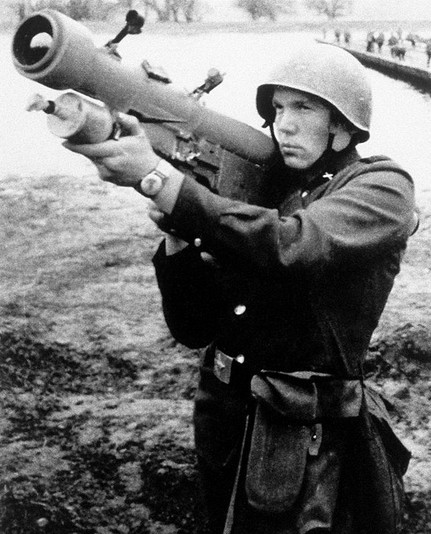
After the death of BI. Shavyrina in 1965 g. He became chief designer SP. Nepobedimыy. AT 1966 SKB year was renamed the Engineering Design Bureau (KBM) MOS. Creating portable SAMs first appeared very problematic. Development of requirements for complex “Arrow 2” and its design were extraordinary: through deep research (in SRI-3 GAU) and the nomination of bold technical ideas in the industry. Construction of portable SAMs began with “brainstorming”: B.I. Shavyrin and a team for two weeks giving up the current affairs and in the course of the exchange of ideas formed the shape of the future complex “Arrow 2”, and also developed a proposal for a draft TTT to the complex.
Later received from abroad information about the complex “Red Eye” confirmed the great similarity of technical proposals for the creation of portable SAMs “Arrow 2” with its foreign prototype. Designers from different countries independently recognized the most appropriate technical solutions identical. The most important element of the complex was carried ZUR heat seeker (TGSN), the development of which was entrusted OKB-357 Leningrad Economic Council (subsequently it became part of Leningrad optomechanical combining – LOMO). Chief designer became head Pickel, which was later replaced OA. Artamonov. In the development of thermal GOS staff involved employees of the State Optical Institute (GOI), headed G.A.Goryachkinym.
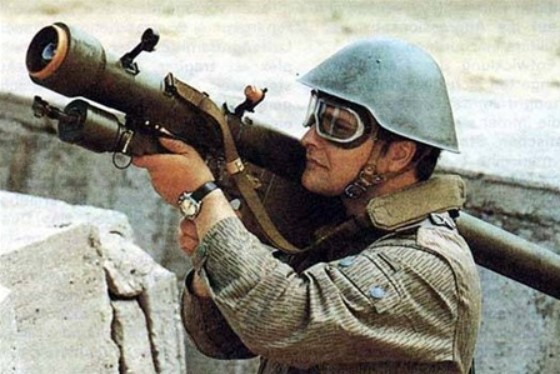
By the time the heat seeker has already been used in the domestic rocket technology – in aircraft homing missiles “air-to-air” K-13 and K-8Mt. Application in 9M32 missile control system was theoretically justified professor at the Air Force Engineering Academy. NO. Zhukovsky AA. Krasovsky. The main difficulty in the development of thermal GOS for SAM 9M32 was to create a device gyrostabilization (head coordinator) low weight and dimensional characteristics. As became known, American experts in the development of thermal GOS for SAM “Red Eye” We found an original solution for the reconciliation of a parabolic mirror with a power head giroprivodom based threefold gyroscope, eliminating the gyro platform, used in large rockets, and two-channel control, that applied, in particular, in aircraft missiles “air-to-air”, and move to a single management with the help of this small gyroscope. But the realization of this idea caused many doubts, in particular, in CDB “geophysics”, due to a lack of perfect element base, used at that time in the domestic gyro-stabilized seeker. However, the developers of the complex 9K32 managed to overcome all the difficulties. Thermal GOS was created mass not exceeding 1,2 kg dimensions required for missiles. SAM guidance produced by the method of proportional navigation, does not require the large transverse overload rocket.
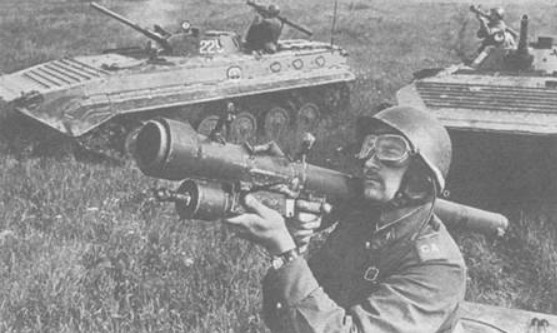
Difficult is the task of creating and rocket propulsion systems for SAM “Arrow 2”. Start missiles was carried out from the launch tube with a shoulder gunners from a standing position, knee, of the trench, and even when the rear cut launch tube in water. The complex was also permits launches missiles from the armored hatch objects, moving at speeds up to 20 kmh. It was necessary to exclude the lesion gunners jet engine combustion products. The solution was found in the implementation of the scheme with the main engine running ZUR at a safe distance for arrow (using a specially developed pyrotechnic delay) after departure from the launcher tube ZUR. Emission of ZUR pipe engagement achieved ejection charge, completely combusted in the launch tube.
Challenge was the duration of operation and maintenance of the main engine charging, commensurate with the flight time of the rocket. Very light missiles with blunt GOS fairing heat quickly inhibited after the engine. Considering the requirements for high maneuverability missiles when pointing at the target passive portion of its flight could be used only to a minimal extent. To reduce the aerodynamic drag of the rocket performed in a large elongation and a small diameter – 76 mm. When existing combustion speeds required duration of (order 10-15 from) many times greater than the maximum achievable for traditional sticks with a central channel and small combustion vault, but, on the other hand, It was several times lower than the corresponding channel-free fuel charge to the combustion end of the flat. After continuous mining could create a composite propellant charge with increased combustion surface due to application of an end crater forms. The required rate of combustion (to 40 mm / s) It was achieved by charging the metal reinforcement wires for accelerated warm-up of internal fuel layers, ensuring their rapid ignition.
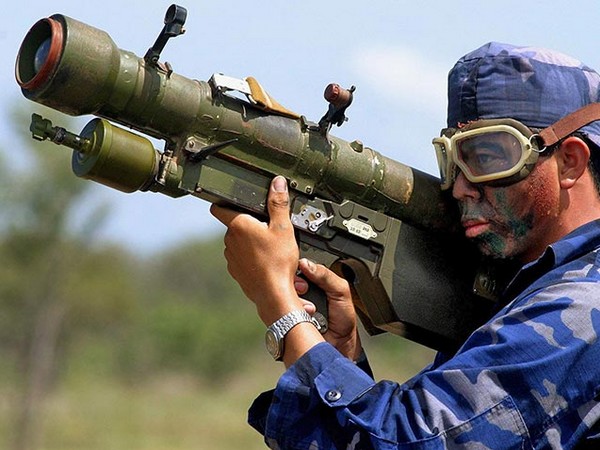
To reduce the weight of the aerodynamic control surfaces and servos for the first time in the Soviet Union single-channel control system homing missiles has been successfully applied. Aerodynamic control surfaces formed on the scheme “duck” SAM have been installed in only one plane, and three-dimensional control is achieved by rotating the rocket at appropriate converting signals from thermal GOS to handlebars. For placing missiles in the launch tube of small diameter wheels recessed in the missile body, a 4 pen stabilizer fit in the space behind the nozzle exit. At start rudders and stabilizers disclosed spring devices.
Compact missiles equipped with a light warhead (1,17 kg), are likely to cause substantial damage to the target only when a direct hit. When using thermal GOS with low sensitivity suggests rocket “in Dogon”, so that the most probable case becomes approach to the target with small angles to its surface. Upon collision a rapid destruction of the rocket. Under these conditions for the effective destruction of the target in the fusing device was first used ZUR pulse regenerator high sensitivity magnetoelectric, in which the scheme is applied semiconductor amplifier and a reactive contacts, ensuring its timely action when you hit solid obstacles.

MANPADS "Strela-2" was used during the conflict in the Falkland Islands (argentinskimi BBC), during the Iran-Iraq conflict, in Angola (MPLA and Cuban ska wail against South Africa) and so on. d. The complex is delivered to many countries around the world: Algeria, Afghanistan, Benin, Botswana, Burkina Faso, Hungary, Gaia well, Ghana, Guinea, Gvineyu-Bissau, Germany, Yemen, Zaire, Zambia, Zimbabwe, India, Iran, Iraq, Jordan, Cambodia, Cuba, Qatar, North Korea, Kuwait, Laos, Lebanon, Libya, Mauritius NIJ, Had, Mongolia, Mozambique, Namibia, Nicaragua, Nigeria, Oman, Peru, Salvador, Seychelles, Syria, Saerra Leone, Sudan, Tanzania, Finland, Chad, Uganda, Ethiopia, South Africa. The complex produced under license in: Bulgaria, Egypt, Czech Republic, China, Poland, Romania, Yugoslavia. China and Egypt have made their own versions of MANPADS, representing modernized versions "Arrow 2".
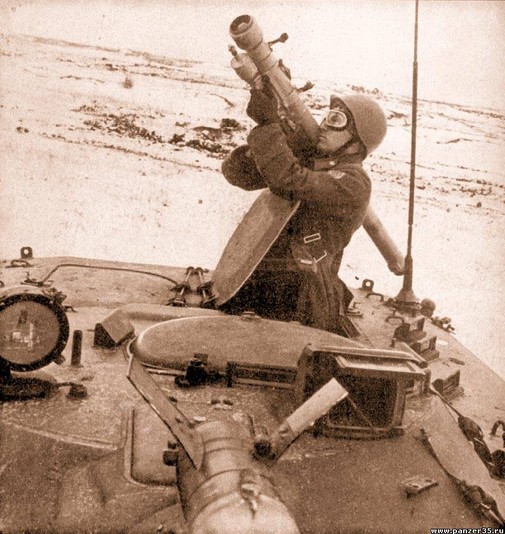
The performance characteristics of MANPADS "Strela-2M"
| Range defeat | maximum, km: 4.2 minimal, km: 0.8 |
| The height of the lesion | maximum, km: 2.3 minimal, km: 0.05 |
| probability of defeat | 0,11 – 0,24 |
| The maximum speed of the targeted objectives, m / s | to meet: 150 vdogon: 260 |
| The maximum speed of the rocket, m / s | 430 |
| Weight, kg | missiles: 9,6 missiles in TPK: 15 warhead: 1,17 |
| guidance type | Passive infrared seeker |
| self-destruction time, from | 14-17 |
| Preparation time a rocket for launch, from | 10 |
Photo MANPADS 9K32 “Arrow 2”
